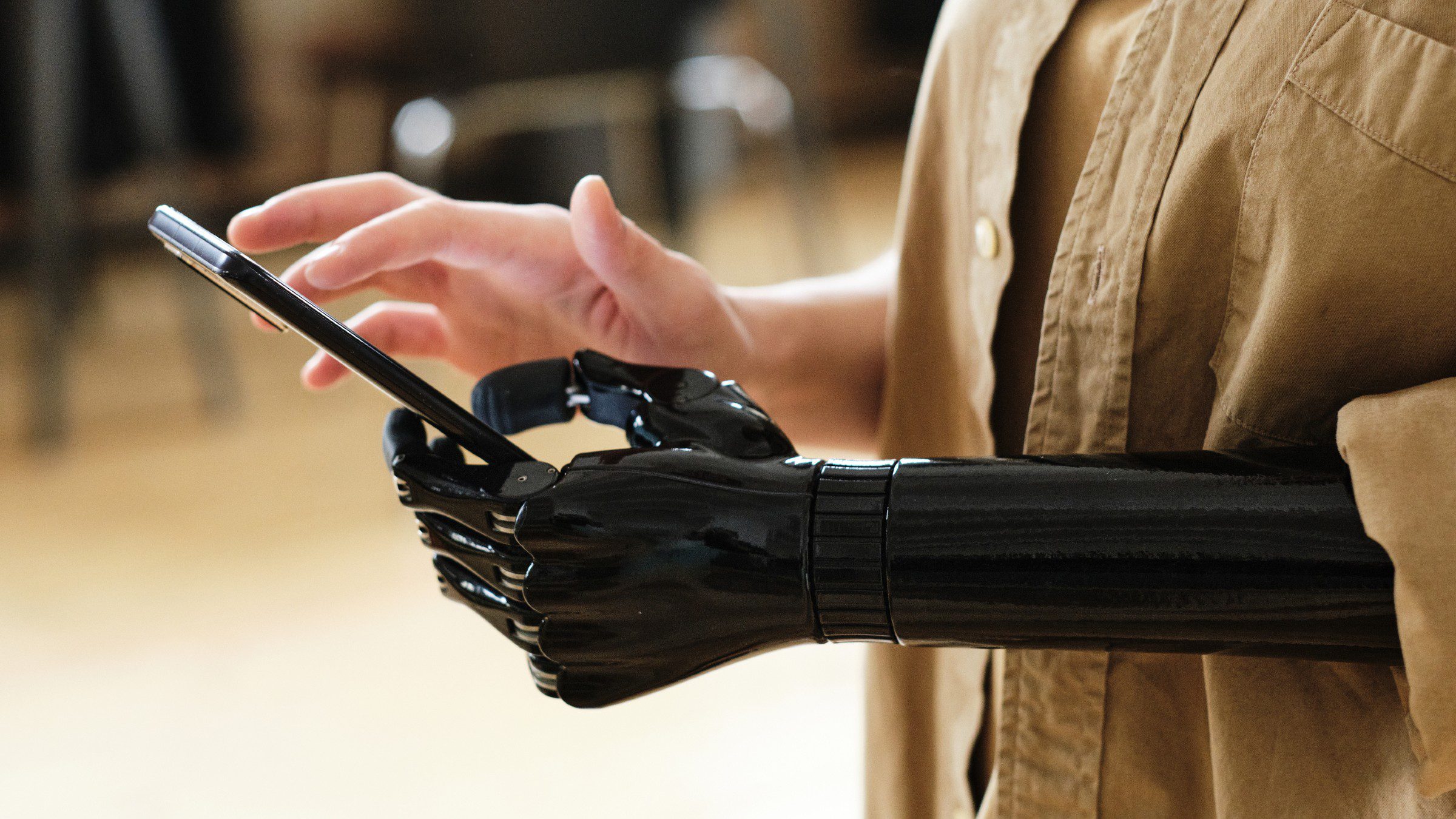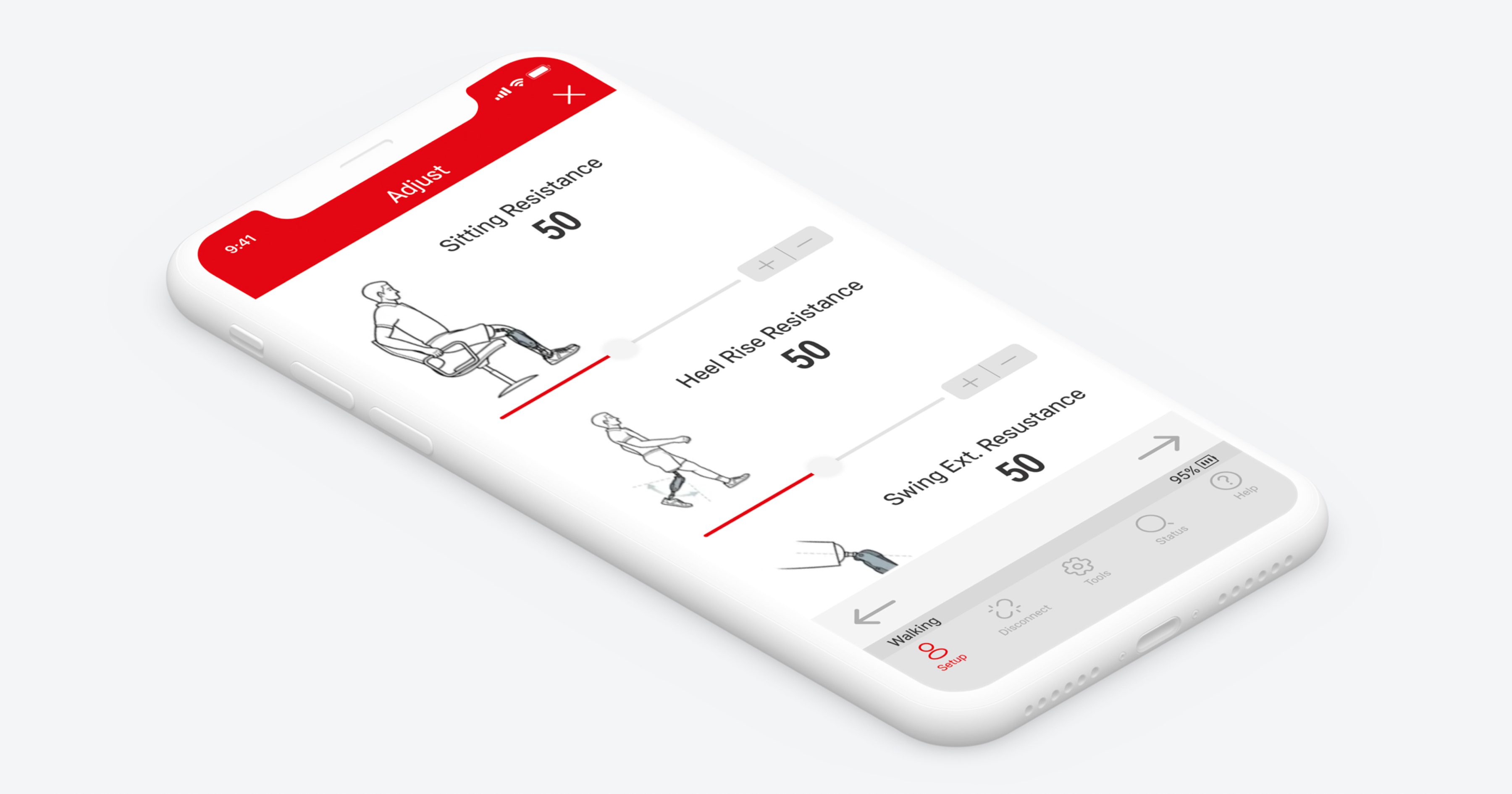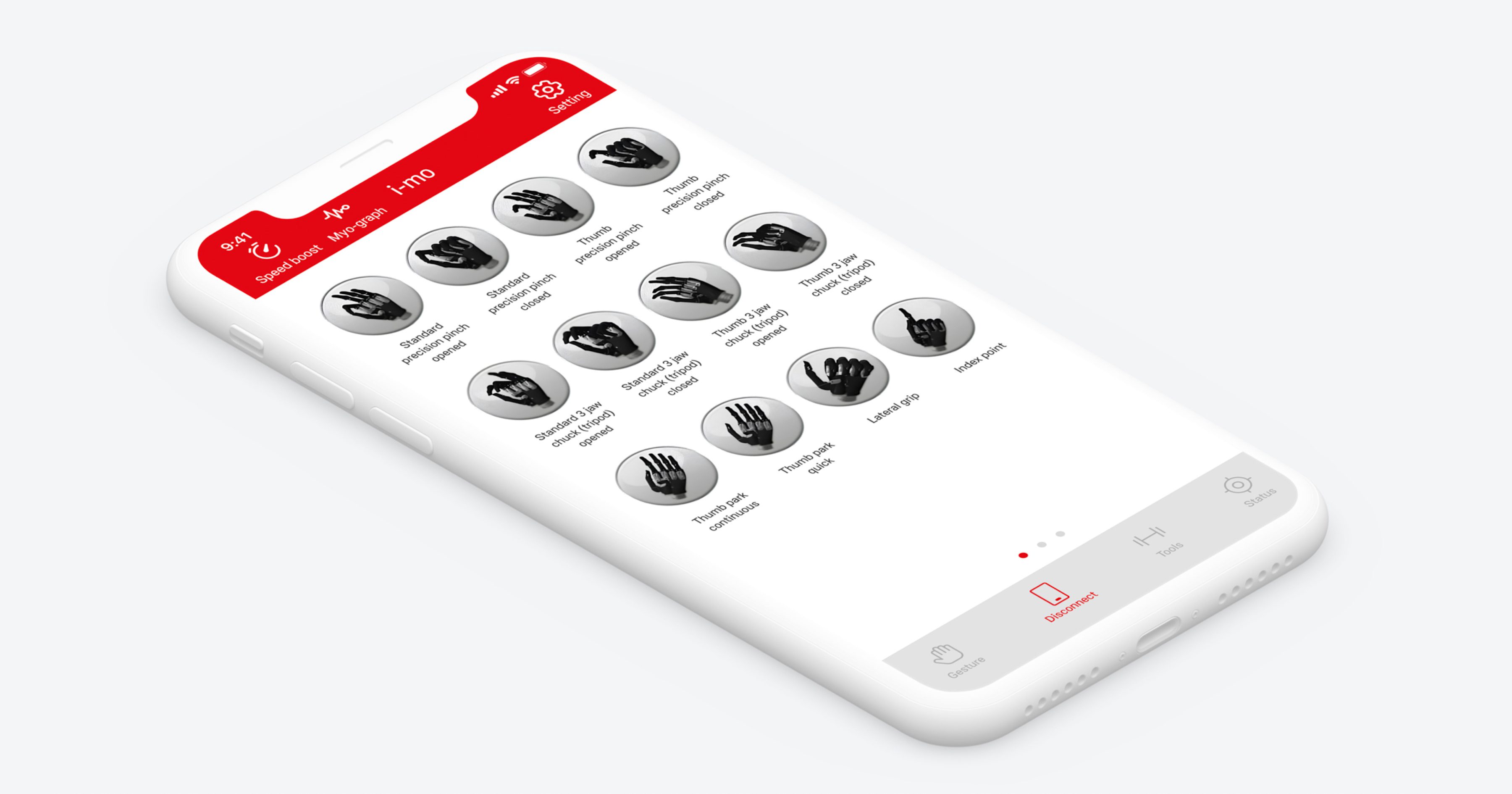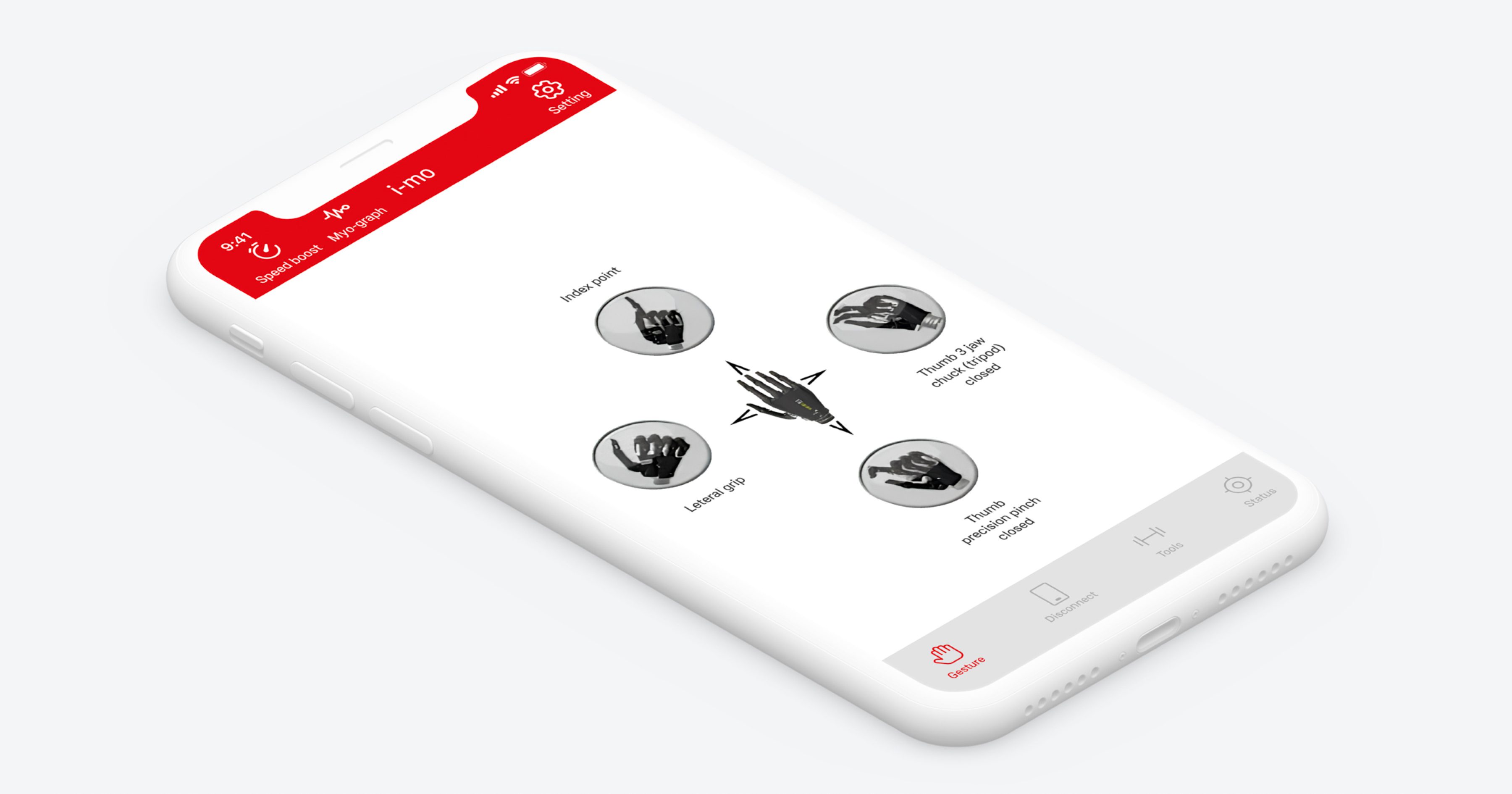Benefits of Incorporating Mobile Apps into Prosthetic Limb Solutions
Key Features of Prosthetic Limb Apps:
Thank you for reaching out to Sigma Software!
Please fill the form below. Our team will contact you shortly.
Sigma Software has offices in multiple locations in Europe, Northern America, Asia, and Latin America.

USA

Sweden

Germany

Canada

Israel

Singapore

UAE

Australia

Austria

Ukraine

Poland

Argentina

Brazil

Bulgaria

Colombia

Czech Republic

Hungary

Mexico

Portugal

Romania

Uzbekistan
In recent years, significant advances have been made in the field of advanced prosthetic limbs, integrating cutting-edge sensor technology and innovative solutions to improve the lives of amputees. This article explores the transformative potential of mobile applications in the field of these advanced prosthetic limb solutions. By leveraging the power of mobile applications, people with limb loss can experience enhanced control, real-time monitoring, and improved accessibility like never before.
Benefits of Incorporating Mobile Apps into Prosthetic Limb Solutions
Key Features of Prosthetic Limb Apps:
Incorporating mobile apps into prosthetic limb solutions has undeniably transformed the assistive technology landscape. The enhanced control, real-time monitoring, and improved accessibility offered by these apps have not only revolutionized the user experience but have also paved the way for more advanced and personalized prosthetic solutions, ultimately improving the quality of life for people with limb loss.
One of the key benefits of incorporating mobile apps into prosthetic limb solutions is the increased control and customization they provide to users. Traditional prosthetics often have limited adjustability, making it challenging for users to achieve comfortable and natural movement. Mobile apps equipped with advanced technologies such as Bluetooth connectivity and motion sensors are revolutionizing this experience.

Users can now precisely control their prosthetic limbs through intuitive smartphone interfaces. These apps allow for real-time adjustments, enabling users to change their grip strength, walking patterns, and even gestures to ensure a customized experience that meets their unique needs and preferences. Such customization not only enhances comfort but also increases the overall confidence of prosthetic limb users, enabling them to perform everyday tasks with ease.
Mobile apps integrated into prosthetic limb solutions provide users with real-time monitoring and feedback that can help improve their overall quality of life. These apps are often equipped with sensors that can collect data on various parameters, such as movement patterns, pressure points, and frequency of use. By analyzing this data in real-time, both users and healthcare professionals gain valuable insights into the performance of prosthetic limbs. For users, this means immediate feedback on their gait, posture, and usage habits.
This real-time information enables them to make necessary adjustments to ensure optimal functionality and comfort. Healthcare professionals can remotely monitor their patients’ progress and provide timely guidance and support. This continuous feedback loop increases the efficiency of the prosthetics, resulting in higher user satisfaction and improved mobility.
Mobile apps have been instrumental in improving accessibility for people who use prosthetic limbs. These apps are designed with user-friendly interfaces, making them accessible to people with varying levels of technological expertise. In addition, the integration of features such as voice commands and haptic feedback ensures that people with disabilities can easily operate the app regardless of their physical limitations.
In addition, mobile apps facilitate seamless communication between users and healthcare providers, breaking down geographic barriers. Remote consultations, troubleshooting, and even software updates can be performed through these apps, saving users the hassle of frequent in-person visits. This increased accessibility not only simplifies the user experience, but also fosters a sense of independence and inclusion among prosthetic limb users, enabling them to lead more fulfilling lives.
The evolution of prosthetic limb technology has been greatly enhanced by the development of dedicated mobile apps tailored for prosthetic limb users. These apps offer a variety of features designed to improve functionality, comfort, and user experience. Here are some of the key features that distinguish these cutting-edge applications:
Prosthetic limb apps are equipped with advanced sensor integration capabilities that enable precise movement and control. Motion sensors, accelerometers, and gyroscopes embedded within the prosthetic limb provide real-time data to the app. This data is then analyzed to accurately understand the user’s movements and gestures. As a result, users can control their prosthetic limbs with natural and intuitive motions.

Example of force sensors to adjust seat and heel rise resistance in a mobile app: GaitLab
Prosthetic limb apps prioritize usability to ensure that people with varying levels of technological expertise can easily navigate and operate the application. These apps feature intuitive interfaces with straightforward control options.
Such apps can provide a visually intuitive interface that allows users to select different grip patterns and control finger movements with simple taps and swipes. These interfaces provide users with effortless control, allowing them to seamlessly switch between functions.


Example of grip patterns and finger movement control in a mobile application: Touch Bionics i-Limb
Prosthetic limb apps collect and analyze data related to the user’s movements and usage patterns. This data-driven approach enables continuous performance optimization. By monitoring how users interact with their prosthetic limbs, apps can identify areas for improvement.
Such apps use detailed performance analysis to help users and healthcare professionals track progress and make necessary adjustments for improved comfort and functionality.
Prosthetic limb apps are designed to integrate seamlessly with other devices and platforms, extending their functionality and improving the user experience. These apps often support connectivity features such as:
By incorporating these key features, prosthetic limb apps have transformed the way users interact with their artificial limbs. By providing precise control, easy-to-use interfaces, data-driven insights, and seamless connectivity, these apps have revolutionized the prosthetic experience and empowered users to live more independent and fulfilling lives.
Prosthetic app development and integration come with its own set of challenges, each requiring innovative solutions to ensure the best possible user experience. Here we explore some of the prominent challenges faced in this field and the creative solutions that have been developed to overcome them.
Challenge: With the influx of sensitive user data, ensuring privacy and security is paramount when developing prosthetic limb applications. Fear of data breaches and unauthorized access to personal information can hinder user trust and adoption of these technologies.
Challenge: Prosthetic limbs come in a variety of models, each with its own unique specifications and components. Ensuring that a single application can seamlessly interface with this wide variety of limbs can be a daunting challenge.
Challenge: The complexity of prosthetic limb applications can be overwhelming for new users. Ensuring that users are properly trained to effectively use the app and understand its features is critical to a positive user experience.
As prosthetic limb technology advances, it becomes increasingly important to address challenges related to privacy, compatibility, and user education. By employing secure development practices, ensuring compatibility through standardized protocols, and prioritizing user-friendly interfaces and training, developers can create prosthetic limb applications that not only meet the diverse needs of users, but also improve their overall quality of life. Through these innovative solutions, the integration of prosthetic limb applications into mainstream healthcare is becoming more seamless and user-friendly, ultimately transforming the lives of people with limb loss.
Q: How do prosthetic limb mobile apps enhance user control and customization?
A: Prosthetic limb apps empower users with precise control over their prosthetic limbs through intuitive interfaces and real-time adjustments. Features like Bluetooth connectivity and motion sensors enable personalized experiences tailored to individual preferences and needs.
Q: What benefits do prosthetic limb apps provide in terms of real-time monitoring and feedback?
A: Prosthetic limb apps offer users and healthcare professionals valuable insights into prosthetic limb performance through real-time monitoring and feedback. Sensors collect data on movement patterns, pressure points, and usage habits, facilitating optimization for enhanced comfort and functionality.
Q: How do prosthetic limb apps improve accessibility for users?
A: Prosthetic limb apps prioritize accessibility with user-friendly interfaces, voice commands, and haptic feedback. They enable seamless communication between users and healthcare providers, allowing for remote consultations, troubleshooting, and software updates, thus fostering independence and inclusion.
Q: What are the key features distinguishing prosthetic limb apps?
A: Prosthetic limb apps integrate sensor technology for precise movement, offer user-friendly interfaces with customizable controls, facilitate data collection and analysis for performance optimization, and support connectivity with other devices and platforms for enhanced functionality.
Q: What challenges are addressed in prosthetic limb app development, and how are they mitigated?
A: Prosthetic limb app developers tackle challenges such as privacy concerns, compatibility with various limb models, and user education. Solutions include implementing robust security measures, adhering to standardized protocols, and providing comprehensive onboarding and training resources.

Andrii's expertise primarily encompasses the Healthcare industry. Bolstered by extensive knowledge in the Information Security domain and ML/AI. Andrii Pastushok is committed to guaranteeing clients receive an exceptional product development experience.
Linkedin profileBenefits of Incorporating Mobile Apps into Prosthetic Limb Solutions
Key Features of Prosthetic Limb Apps:


On November 27, in Lviv, Forbes AI Summit brought together entrepreneurs, technology leaders, and scientists for an honest conversation about how AI is reshapin...

The EU Data Act went live in September 2025. Its rollout across Europe has been uneven, with only a few member states having completed the national set-ups. Nev...

For years, manufacturers have been talking about the advantages of shifting to outcome-based business models. The rise of AI has made the opportunity for transf...
Would you like to view the site in German?
Switch to German